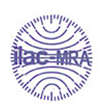













Features: Plate heat exchanger unit is our company international advanced level of products, according to the specific situation of China's regional heating, absorption and digestion of foreign advanced technology.
The Advantages of Plate Heat Exchanger
1, Energy efficient plate heat exchanger (or other types of heat exchangers)
2, The circulating pump
3.make up pump
4.Filter pump
5.pump and va
6.Measuring instruments
7.electrical and automation control cabinet
Plate heat exchanger working data
Plate heat exchanger unit is divided into three according to use:
1, steam-water heat exchanger unit
Primary network (heat): steam pressure 0.1 ~ 0.4MPa
Second Net:
(1) heating water supply back to the plumbing temperature: a, 95/97 ℃ b, 85/60 ℃
(2) domestic hot water supply back to the plumbing temperature: 65/10 ℃
(3) air conditioning water supply back to the plumbing temperature: 65/50 ℃
2, water - water heat exchanger unit
Primary network (heat source):Supply and return water temperature: a, 130/80 ℃ b, 110/70 ℃
(1) heating water supply back to the plumbing temperature: a, 95/70 ℃ b, 85/60 ℃
(2) domestic hot water supply back to the plumbing temperature: 65/10 ℃
(3) air conditioning water supply back to the plumbing temperature: 65/50 ℃
3, plate heat exchanger unit
Maximum working temperature: ≤330 ℃
Maximum working pressure: ≤0.4MPa
Maximum heating radius: ≤ 3KM
Medium flow resistance: 0.05 ~ 0.1 MPa heat side of the cold side 0.04 ~ 0.11 MPa
Operation and maintenance of thermal power station
1, the preparatory work before starting the heating station
(1) heating system filled with softened water.
(2) motor test run to determine the circulation pump, pump rotation direction and power wiring is correct
2, heat station operation and maintenance
(1) circulating water system
① first, Let's make user in and out valve fully open, and then the inlet valve side of the circulating pump open, if the steam - water heat exchanger, the trap before and after the valve is fully open.
②循环水泵出口阀门微开,待泵启动后再逐渐开大,此时用钳形电流表测量是否超过电机的额定电流,如有超电机的额定电流及电机过热现象则应关小出口阀门,适度为止。
② circulating pump outlet valve slightly open until the pump starts and then gradually open large at this time with a clamp meter to measure whether the motor over the rated current, if the super-motor rated current and motor overheating phenomenon should be closed .
(2) heating system
① When the circulating pump stable operation, gradually open the inlet valve and inlet valve, start heating.
② If steam-water heat exchanger, it is necessary to observe whether the drainage hydrophobic, if not smooth, may properly open the hydrophobic bypass valve (do not run the principle of steam) until the hydrophobic flow, and then close the bypass valve .Attention to observe the hydrophobic temperature, in order to prevent the secondary steam. If the secondary steam generation,should close the trap valve, limite the amount of hydrophobic.so that heat exchanger to maintain a certain water level, to achieve the purpose of hydrophobic undercooling (less than 100 ℃).
③ regulator system
Check the regulator pump automatic system action is sensitive or not (according to design requirements, adjust the electrical contact pressure gauge pointer upper and lower limit value).
④ shutdown
first turn off the heat supply valve when stop the movement,. After 3-5 minutes later, and then stop run the circulating pump. When Winter sports, put the net system water to prevent damage to equipment and piping.
(5) regular maintenance of heat exchangers, please read the factory "plate heat exchanger manual", such as heat for more than 170 ℃, but also with reference to the company's "high-temperature steam - water heat exchanger."